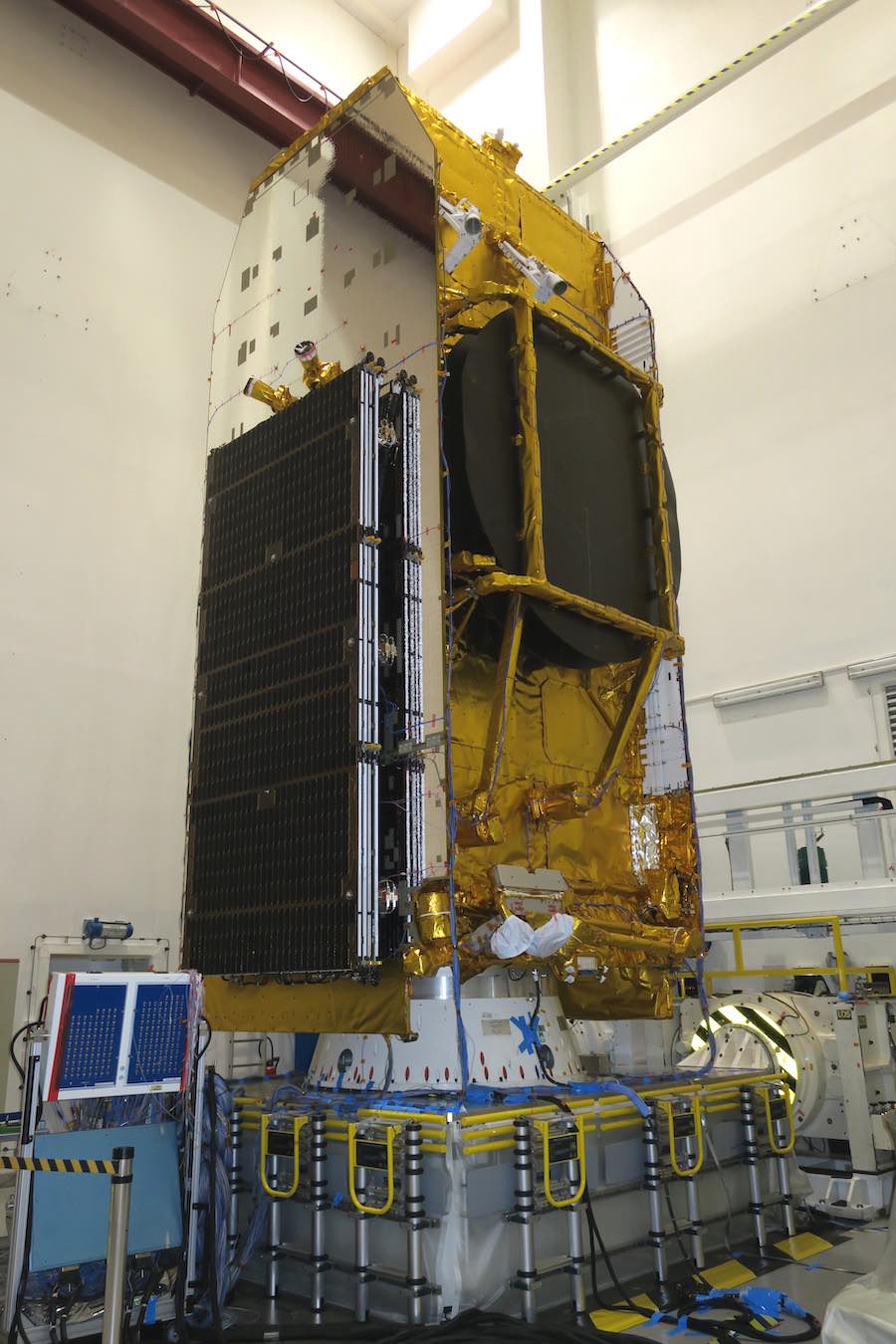
The first in a new line of Airbus-built communications satellites is stowed for launch on a SpaceX Falcon 9 rocket Friday night from Cape Canaveral, ready for a mission to beam hundreds of TV channels to Eutelsat customers across Europe, the Middle East, and North Africa.
The Hotbird 13F satellite is built on the new Eurostar Neo spacecraft platform designed by Airbus Defense and Space, with funding support from the European Space Agency. The Eurostar Neo satellite design can accommodate additional payload capacity, and introduces more efficient power and thermal control systems than the previous generation of Eurostar E3000 Airbus-built satellites.
“It’s a huge new product, payload centric, more competitive than anything we have ever done,” said François Gaullier, head of telecommunications satellites at Airbus. “And we are more than happy to have developed this product, of which Hotbird 13F will be the first one to be launched.”
ESA provided about 130 million euros, or $126 million at current exchange rates, to help pay for development of the new satellite platform. Airbus funded the rest of the development cost with its own money.
Eutelsat, a Paris-based commercial satellite operator, was the first customer to sign up to use the new Eurostar Neo spacecraft platform. The launch of Eutelsat’s Hotbird 13F will be followed in November by the launch of an identical satellite for Eutelsat named Hotbird 13G.
“This Eurostar Neo satellite has been a partnership project done with Airbus, and with the first customer Eutelsat,” said Elodie Viau, ESA’s director of telecommunications and integrated applications. “This Eurostar Neo is a new set of satellites that are very competitive, that are optimized to be (cost) effective, and to use electrical propulsion in a very optimized way to allow more and more payload capacity.”
On its journey toward geostationary orbit, Hotbird 13F will use PPS5000 plasma orbit-raising thrusters developed by the French company Safran. The fuel-efficient plasma propulsion system relies on xenon gas and electricity to generate thrust, rather than a conventional liquid rocket fuel like hydrazine. That reduces the weight of the satellite, allowing engineers to launch on a smaller rocket or add additional payloads to support more communications capacity for customers.
According to an Airbus spokesperson, Hotbird 13F weighs 9,868 pounds (4,476 kilograms) at launch. The spacecraft is cocooned inside the nose cone of SpaceX’s Falcon 9 rocket, awaiting liftoff during a launch window opening at 11:26 p.m. EDT Friday (0326 GMT Saturday). The launch window extends until 1:22 a.m. EDT (0522 GMT).
The forecast team from the U.S. Space Force’s 45th Weather Squadron predicts a 90% chance of favorable conditions for liftoff Friday night.
Email the author.
Follow Stephen Clark on Twitter: @StephenClark1.
from Spaceflight Now https://ift.tt/23FVwCP
via World Space Info







0 comments:
Post a Comment